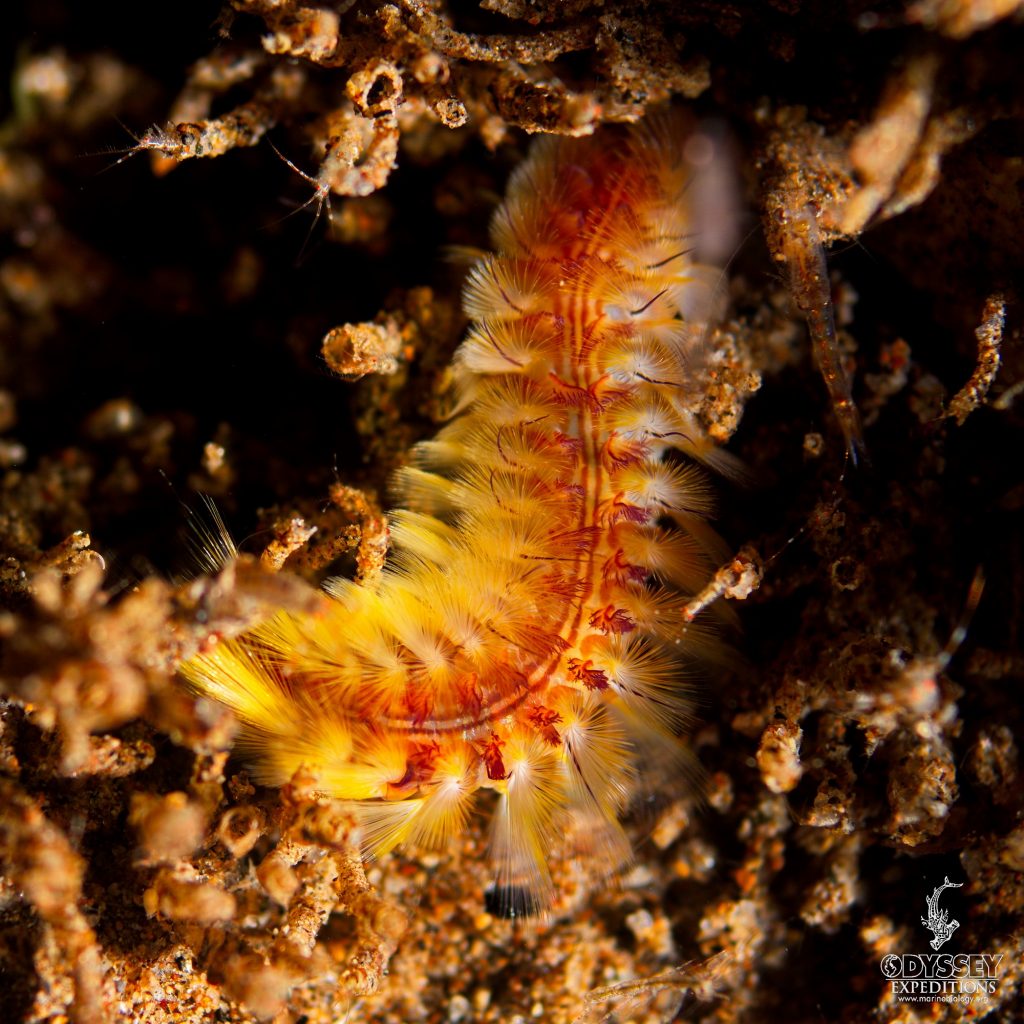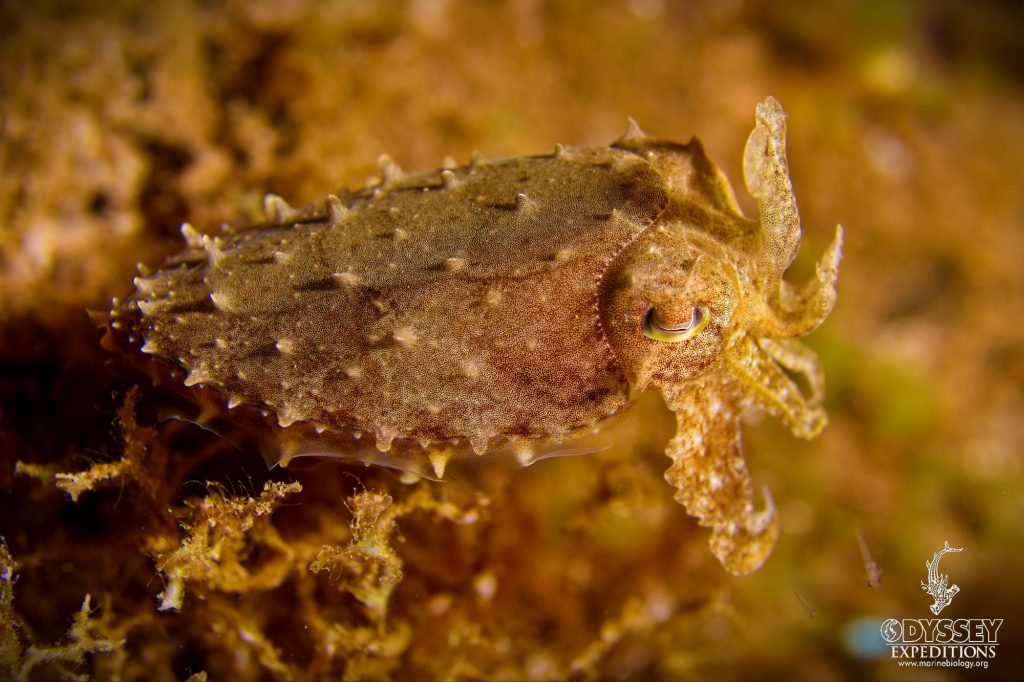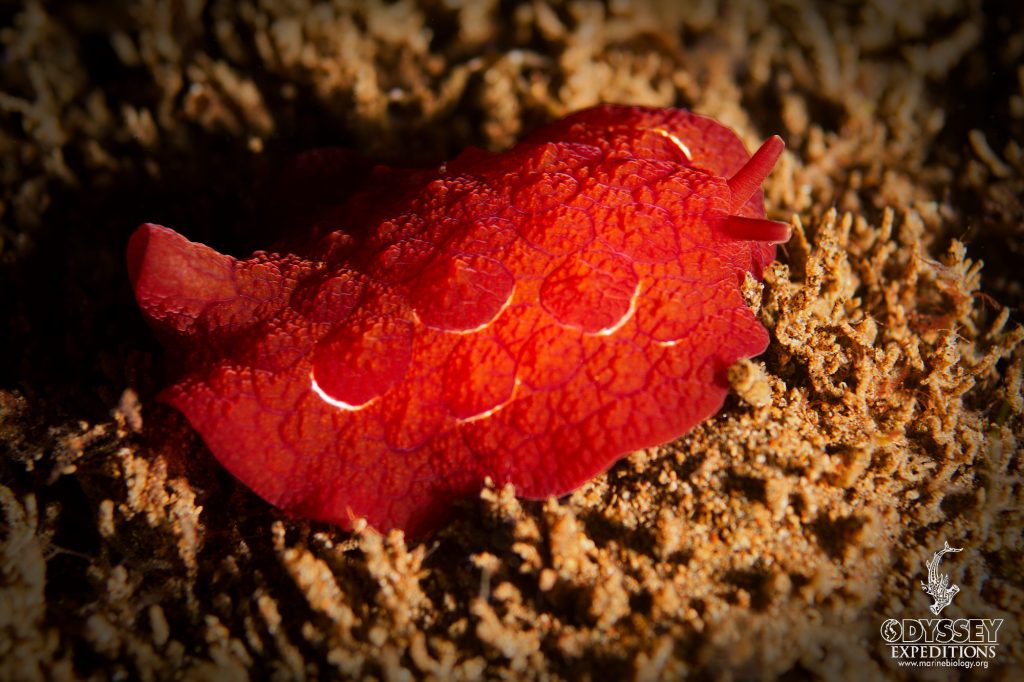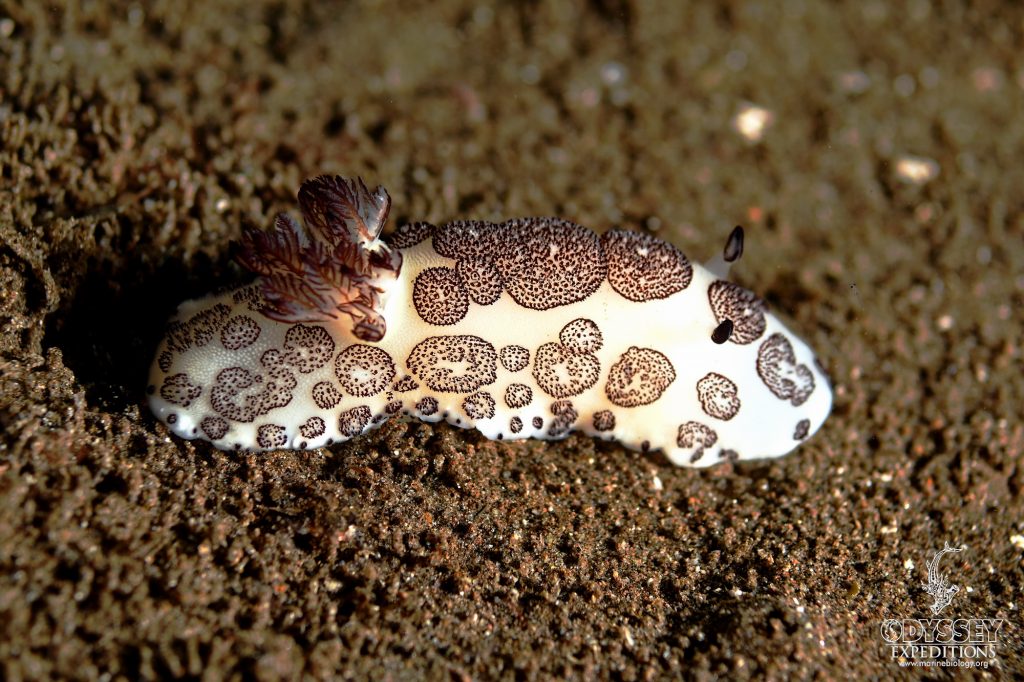
The Golden Fireworm – Chloeia flava – #PolychaeteA segmented #bristleworm belonging to the family #Amphinomidae. They have an elongated body made of 37 visible segments, each of them has a distinctive ocelli (simple eye), which is purple or dark color with a white outline and placed in the middle of the upper side. Small gills are present on both external side of the back just before the bristles and on almost all the segments.The body is covered laterally with calcareous spines or setae, they have bristle aspect which are whitish, fine, sharp and venomous.






